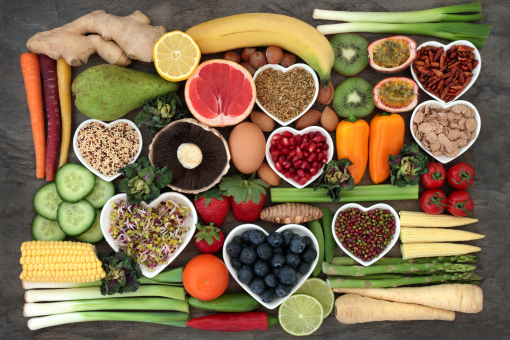Why restaurants are adding ‘clean foods’ to their menus

There’s several years of history behind the new truffle fries at Islands Restaurant.
For starters, they mark the casual restaurant chain’s return to serving made-to-order baskets of french fries with potatoes sliced daily, which it stopped doing about 10 years ago, according to Michael Smith, Islands’ president.
But they also show the chain’s commitment to clean food, a movement that began about a dozen years ago. It was a reaction against highly processed foods, which have five or more ingredients, according to early clean food advocates.
“People say, ‘I want things you can pronounce’,” said Roger A. Clemens, an adjunct professor of pharmaceutical sciences and associate director of the regulatory science program at the University of Southern California School of Pharmacy.
He pointed to a new survey by the International Food Information Council taken in May that showed that 63% of adults are influenced by ingredient lists on foods and beverages and that 64% try to choose foods with clean ingredients.
People in the online survey of more than 1,000 adults in the U.S. described “clean” with terms such as “not artificial or synthetic” and used words including “organic” or “fresh.”
They are motivated by wanting to experience the benefits of healthy foods or to avoid chemical-sounding foods.
Clemens saw how that desire is playing out on a recent visit to an Islands Restaurant.
There was a sign at the entrance that said the chain promoting the chain’s “clean and customized” campaign.
“Catch the new wave of clean,” it read. “At Islands we take pride in sourcing the highest quality ingredients. Our commitment is to prepare and serve wholesome and clean foods.”
He went in and ordered a salad, but said the clean food sign didn’t affect his choice.
The sign reflects what customers want more than nutritional content, according to Clemens, speaking in a phone interview.
“Much of the restaurant industry and parts of the food industry have dumbed everything down.”
That’s not the intent, according to Smith.
“We wanted to improve our menu and be one of the casual dining restaurants that offers this to our guests. There aren’t many out there,” he said in a phone interview.
“We want to be one of the first and do what’s right.”
The clean food movement has influenced restaurants, but full-service chains haven’t embraced it the way quick-service chains have. Chipotle Mexican Grill, based in Newport Beach, boasts that it uses 53 ingredients that diners can pronounce, like yellow onion and sunflower oil.
St. Louis-based Panera Bread calls 100% of its food 100% clean, meaning it uses no artificial preservatives, flavors, sweeteners or colors.
Islands’ commitment is to avoid growth hormones, antibiotics, artificial ingredients and preservatives.
“It’s a project that goes through every ingredient on the menu,” Smith said in a phone interview.
Islands’ menu is about 75% clean now, with the goal of reaching 100% percent in 2022, Smith said in a phone interview.
Much of the work, which included dealing with suppliers, was done during the pandemic he said, even though the health crisis brought about supply chain disruptions.
Clemens said that clean food marketing fails to take into account the complexity of food chemistry.
“Their sign says no hormones,” Clemens observed in a phone interview. “Well, how do you think plants grow?”
He gave some examples of how labels can be misunderstood or incomplete.
Vinegar, which is on Chipotle’s list of 53 ingredients, is the same as acetic acid.
Carmine, a natural crimson food coloring, is derived from beetles, which some vegetarians might not accept.
Milk contains more than 100 ingredients, far more than the five-ingredient limit in many clean-eating recipes. [
Clemens said too many people make dietary choices based on what they see on social media and should be seeking out real medical experts instead.
“Talk to people like me. Don’t rely on the blogosphere.”
Possible resources, he said, include the Institute of Food Technologists and the Academy of Nutrition and Dietetics.
Well-known facilities such as Johns Hopkins Medicine and the Mayo Clinic also post nutritional articles online.
Eating clean can mean eating more whole foods and less highly processed snack foods, dietician Emily Brown wrote in an article on the Mayo Clinic website.
She suggests limiting packaged foods; foods with added salt, sugar or fat; and foods that are dramatically altered compared with their natural forms.
“Trying to simplify a menu, I get that,” said Clemens. “But I work in a space where you try to get nutrition in malnourished population groups. And you can’t do that with five ingredients.”

